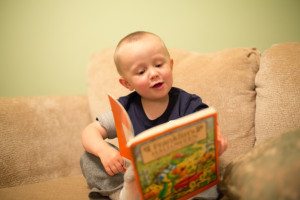When your child begins reading, one of the most important skills they must conquer is being able to retell the book they’ve just read. People often confuse retelling with giving a summary so I want to clear that up and give some suggestions for helping your child become great at retelling which will put them on their way to great summarizing as well.
A summary is a telling of the most important events in a story…think main idea and a few supporting details. It’s something that we do as adults when we give book or movie suggestions or when we tell people about our day. This is a more advanced skill than retelling because it requires you to determine the most important events of that book or movie. This is difficult for young children who think everything is important! Summaries usually begin being introduced around second grade with support from the teacher or the use of a graphic organizer.
Retelling means just that….telling the story again! This involves telling most (if not all) of the details. This might sound like a lot but, remember, this is for beginning readers so their texts aren’t very long. Many beginning reading assessments require readers to retell the story and they are often scored by how well they can do this…thus showing their comprehension of the story.
We teach students to pretend we haven’t read the story and have them tell us what happened in the story. Before we can expect children to do this on their own, however, we must model it again and again, then allow them to help us retell, then finally they can take the reins and do so on their own. This is called “the gradual release of responsibility.”
Here are a few suggestions for helping your child with retelling:
* Start by having them do a picture walk through the text they’ve just read and tell the story in their own words using the pictures as guidance. As they get stronger with retelling, start having them do the retelling without the pictures and only use them as needed to refresh their memory.
* Be sure to have them use transition words for each detail such as: first, second, next, then, finally, at the end. Sometimes I make a chart with those words and have them physically touch one of the words before telling me the next detail. This kinesthetic approach seems to really help them.
* Children must use the character’s actual names from the text. It’s best not to let them get into the habit of saying, “he” or “she” or “they.” If someone really hadn’t read the text, this would be confusing and we must teach children that using a character’s names helps the listener understand the story best.
* Once they are getting the hang of doing this on their own, then you can model how to explain the most important part of the story and justify your answer. Again, employ the gradual release of responsibility so that you are modeling, asking for some of their help, and eventually having them do the summary. This will help prepare them to make the transition to summarizing at a later time.

